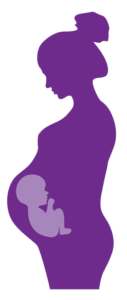
Every May in the United States the nation recognizes Women’s Health Month. The goal of this month is to empower women to prioritize their health
and educate them on the steps they can take to improve their health.
Empowering women who have chronic kidney disease and kidney failure can make all the difference in correcting some of the longstanding disparities observed between men and women. For example, when comparing men to women on dialysis, women have:
- Lower placement rates of arteriovenous fistulas (AVF)
- Higher hospitalization rates
- Higher 30-day readmission rates
- Worse anemia
- More malnutrition
- Worse quality of life
- Greater symptom severity
- Lower likelihood of receiving a kidney transplant
Awareness of these differences is the first step in correcting course. The second step is addressing these disparities head on. The literature is clear
on a few ways that clinicians can support and empower women to improve their health outcomes. Read on to learn more.
Increase Awareness
At every stage in women’s heath, giving them access to knowledge can empower their decision-making and lead to better health outcomes.
This begins with knowing the risks, both women-specific and not, for developing chronic kidney disease (CKD):
- Poorly controlled diabetes
- Poorly controlled high blood pressure or hypertension
- History of acute kidney injury
- Family history of kidney disease
- Frequent urinary tract infections (UTIs)
- High blood pressure or a hypertensive disorder during pregnancy
- Certain autoimmune disorders like RA or SLE
Another important time in life is the menopausal transition with predisposes women with and without CKD to increased risk of heart disease.
This is an important time to educate women on protecting their heart health through diet and lifestyle changes.
Create Easier Access to Support Systems
Women with chronic kidney disease are more often single or divorced meaning they may lack the caregiver or home support that men have access to. Connecting women with resources for support including access to food, transportation, and more can result in better
involvement in their healthcare journey.
Personalized, Patient-Centered Care
By avoiding blanket recommendations and instead, meet patients where they are at. Connecting with patients on a collaborative level
allows for the healthcare team to pivot when a patient needs new interventions.
For example, as mentioned above, women on dialysis tend to have worse nutrition than men. Malnutrition can be caused by many issues including:
- Lack of access to food or inability to prepare food
- Increased metabolic demand due to ESRD, dialysis treatment, and/or comorbid conditions
- Frequent illness especially those resulting in hospitalization
Malnutrition in turn can lead to cognitive challenges, resistance to erythropoietin-stimulating agents (ESAs), sarcopenia, and more. Making a blanket recommendation to “eat more” or “follow a high-protein diet” is likely not sufficient to bridge the gap in patient needs. Instead, assess the individual
and offer them the treatment that fits best which can include connection with community resources, addition of oral nutrition supplements or appetite stimulating medications, or addition of intradialytic parenteral nutrition (IDPN) for HD or intraperitoneal nutrition (IPN) for PD to boost protein and calories.
Healthcare practitioners are partners in health and as a result, it’s our job to help close the gaps in treatment and health outcomes between men and women. To learn more about strategies to support women’s health and other tools to improve nutrition for patients on dialysis, visit our Clinician Login.
We thank our guest blogger Maiya Slusser, MS, RDN, CD, CNSC, for sharing her knowledge and writing this blog post!

